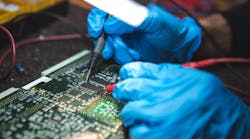Last month, Advanced Micro Devices said that its latest chips based on the 7-nanometer node will compete with Intel's in computing and Nvidia's in graphics for the first time in a long time. The company, which reported less than one-tenth of Intel’s total revenue last year and one-half of Nvidia’s, said that its growth would stay strong over the next year. Its competitors have been less optimistic.
The company is ramping up production of graphics and computer chips based on the 7-nanometer node from Taiwan Semiconductor Manufacturing Corporation. Last week, AMD said that it would grow between 5 and 10 percent in 2019, allaying concerns that its growth would slow sharply like Intel's and Nvidia's. Both companies are starting struggle amid uncertainty in the global economy and a retrenchment in spending on data centers.
Under Lisa Su, who was hired as chief executive in 2014 and ordered the overhaul of the company's core computer and graphics products, AMD has been trying to turn itself around. The company's results are starting to speak for themselves. Sales increased around 6 percent to $1.42 billion in the fourth quarter. That pushed the Silicon Valley company's revenues to $6.48 billion in 2018, up from $5.25 billion in 2017 and $4.27 billion in 2016.
Sales of the company's personal computer chips were strong in the fourth quarter. AMD's computing and graphics units posted $986 million of revenue, an increase of around 9 percent from last year's fourth quarter. The unit's operating profits increased over the same span from around $30 million to $115 million. Sales of AMD's Ryzen chips rose 50 percent over the last year while average selling prices perked up.
The Santa Clara, California-based company said that 65 percent of its revenue in the fourth quarter came from chips released within the last two years based on AMD's Zen CPU and Vega GPU architectures. Selling newer products pushed up profit margins from 34 percent in 2017 to 38 percent in 2018. AMD's net profit - after taxes and other expenses are subtracted from its operating income - rose $370 million over the last year to $377 million in 2018.
AMD is also gaining ground in data centers. In the fourth quarter, AMD shipped more than double the number of Epyc server chips it had in the third quarter despite a spending slowdown among the largest technology companies, Su said. In November, Amazon said it would start renting out to customers cloud computing services based on AMD's Epyc chips, which would be 10 percent less expensive than services using comparable chips.
In semiconductors, the bigger they are the harder they fall. Last month, Intel reported that cloud computing firms like Google, Amazon and Microsoft are starting to slash orders for server chips, dragging down the Silicon Valley giant's growth. Nvidia said that uncertainty in the global economy had dampened demand for graphics chips used in gaming and data centers. That forced it to cut $500 million from its most recent revenue forecast.
“Our story really is a share gain story,” Su said, adding that the company could hold 10 percent market share in server chips by the second quarter of 2020. Although AMD once controlled around 25 percent of server chip segment, Intel today has cornered more than 98 percent. AMD is also trying to introduce its own line of graphics accelerators, called Radeon Instinct to compete with Nvidia in servers, where artificial intelligence algorithms are typically trained.
The company is suffering through some pain in the current quarter. For the first quarter, AMD expects revenues to drop around 12 percent to between $1.2 billion and $1.3 billion. Projected sales are also around 24 lower than AMD's revenue in last year's first quarter. The slowdown stems from an oversupply of graphics chips used in gaming out in the market, an issue that has also caused headaches for Nvidia in recent quarters.
AMD has also rearranged its leadership to keep it moving in the right direction. Last month, AMD said that it had hired Sandeep Chennakeshu to take responsibility for AMD's high-performance personal computer, gaming and semi-custom businesses. Forrest Norrod, who was in charge of AMD's data center and embedded businesses, was promoted to a new role overseeing all of the company's computer and graphics products for data centers.
The company is also boosting its investment in research and development. AMD's fourth quarter R&D expenses were $371 million, an increase of 30 percent from the same quarter last year, and the highest total since the second quarter of 2010. AMD has been investing more and more in R&D efforts ever since its spending slumped to $229 million in the fourth quarter of 2015, according to the company's financial records.
